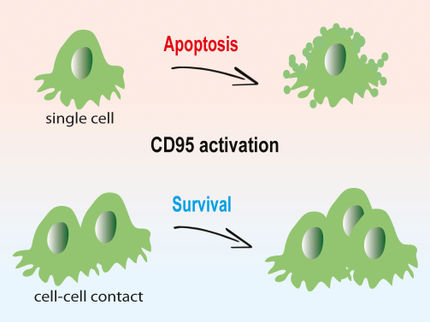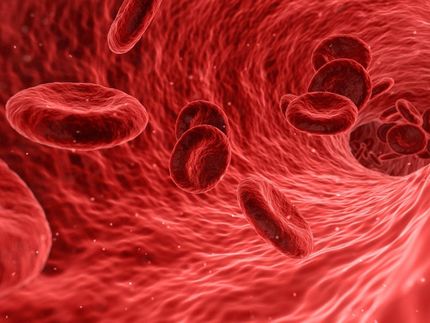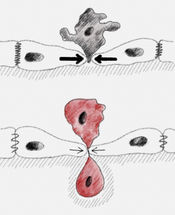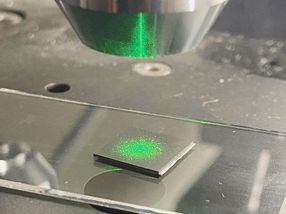Way to fight therapy resistant leukemia by blocking DNA repair
New research posted online by the Nature journal leukemia suggests blocking part of a DNA repair complex that helps some types of leukemia resist treatment can increase the effectiveness of chemotherapy and enhance survival.
Scientists from Cincinnati Children's Hospital Medical Center report that their experimental combination treatment strategy – using a small molecular inhibitor along with chemotherapy – was particularly effective at stopping a stubborn leukemia called T-cell acute lymphoblastic leukemia, or T-ALL. The study involved laboratory cell lines of human leukemia and mouse models of the disease.
Initial remission rates for T-ALL with current treatments are about 90 percent, but the overall survival rate is between 60 and 70 percent.
"Although initial remission rates are high with available treatments, the disease comes back because of drug resistance that leads to relapse. There is an urgent need to develop new therapeutic strategies to combat refractory T-ALL and our study uncovers a way to enhance the effectiveness of chemotherapy," said Fukun Guo, PhD, study first author and a researcher in the Division of Experimental Hematology and Cancer Biology at Cincinnati Children's.
A key breakthrough in the research came when the scientists discovered something that was previously unknown – a molecular mechanism in the Fanconi anemia DNA repair pathway apparently makes T-ALL resistant to chemotherapy. This same pathway has been linked to drug resistance in other types of cancer, Guo said.
Chemotherapy drugs are often designed to kill off malignant cells by damaging their DNA until they transition to a programmed death mode called apoptosis. Some cancers are able to leverage molecular workarounds – such as DNA repair – to become treatment resistant. This has helped prompt the development of targeted molecular therapies to attack other components of cancerous cells – either as stand-alone therapies or to augment chemotherapy.
Fanconi anemia (FA) is a genomic instability syndrome caused by mutations inside a cluster of proteins normally responsible for DNA repair in cells. Mutation or silencing of FA genes is also associated with increased sensitivity to DNA damaging drugs. Guo and his fellow researchers worked under the premise that inhibiting the FA pathway and combining this with DNA damaging chemotherapy drugs might be a promising strategy for cancer therapy.
To block the FA repair pathway in leukemic cells, researchers tested the inhibition of a protein called mTOR (mammalian target of rapamycin). The protein plays a critical role in the growth and survival of mammalian cells – although disruptions in the mTOR molecular pathway are linked to tumor growth, chemotherapy resistance and poor prognoses in malignancies such as leukemia.
Initial testing of mTOR inhibition was achieved by direct deletion of the mTOR gene in mice. The scientists noticed that this caused significant down regulation, or silencing, of a protein called FANCD2 – a component of the FA repair pathway.
The scientists then tested three new mTOR inhibitors currently under development (pp242, AZD8055 and INK128) in combination with the chemotherapies AraC, Etoposide and Cisplatin to see how they affected laboratory lines of leukemia cells and mouse models of the disease. They compared the effectiveness of the combination treatments with just treating the leukemia by chemotherapy or inhibitors alone. Tests showed that combining mTOR inhibitors with chemotherapy was far more effective at treating leukemia than when the inhibitors or chemotherapy were used as stand-alone treatments.
In one example highlighted by the researchers, mouse models of T-ALL were treated either with a combination of mTOR inhibitor pp242 and the chemotherapy drug AraC, or they were treated with just AraC or pp242. Mice treated only with pp242 or AraC died from their leukemia within 80 days. Mice treated with pp242 and AraC showed significantly prolonged survival, with 75 percent surviving more than 100 days and 50 percent surviving about 175 days.
Although the researchers emphasized that laboratory results involving cell lines and mice do not necessarily translate to human treatment, they say their findings show that new mTOR inhibitors combined with chemotherapy could become a new treatment strategy for T-ALL. They also report that inhibition of the FA pathway coupled with chemotherapy maybe be useful for treating other types of cancer.
Guo and his collaborators continue their studies by establishing additional mouse models of leukemia that have been transplanted with patient cells of relapsed and refractory disease. They are testing combination treatment on the mice with mTOR inhibitors and a chemotherapy agent called AraG, which is currently in clinical use to treat T-ALL.
























































